Travel
Sci-Tech Hub
Daejeon Metropolitan City
Daejeon Metropolitan City’s history in science and technology dates back to 1973, when Daedeok Science Town (now Daedeok Innopolis) was founded as a national R&D hub. While the city houses many of the country’s best and brightest researchers, visitors can also learn more about the nation’s level of and achievements in science and technology at museums and facilities in Daejeon.
Written & photographed by• Park HeeBeom, CEO of ScienceNews
Photographed by• Studio Kenn
The history and future of the nation’s science and technology are featured at the National Science Museum, which attracts more than a million visitors every year.
To protect against the coronavirus pandemic, the museum has placed limits on exhibition halls and visitor capacity. Only Science and Technology Hall (limit 1,200 per day spread over three time blocks), Natural History Hall (420), Humanity Hall (420) and Future Tech (200 in two time blocks per day) are open at this time.
The first floor of the science hall features devices and apparatuses available for handson experience. A centrifugal bicycle provides a better understanding of new and renewable energy, while Corioli’s Room displays the principles of deflecting force.
Natural History Hall next door showcases organisms of all sizes. The magnifiers installed there aid visitor understanding of exotic microorganisms. Humanity Hall has sections each representing an evolutionary phase of humans from Australopithecus to homo erectus and homo sapien; the survival methods and behavior of early humans are also categorized.
Future Tech toward the back gives an overview of the history of global industrial technology. The four historical phases of the Industrial Revolution, a timeline of the world’s industrial development, are exhibited in a way children can understand.
A nature-rich road is tucked alongside the museum’s parking lot. The cherry blossom-flanked road leads past the Daejeon Education and Science Research Institute and the Currency Museum of Korea, and eventually to the KIGAM Geological Museum and Daejeon Observatory.
KIGAM Geological Museum
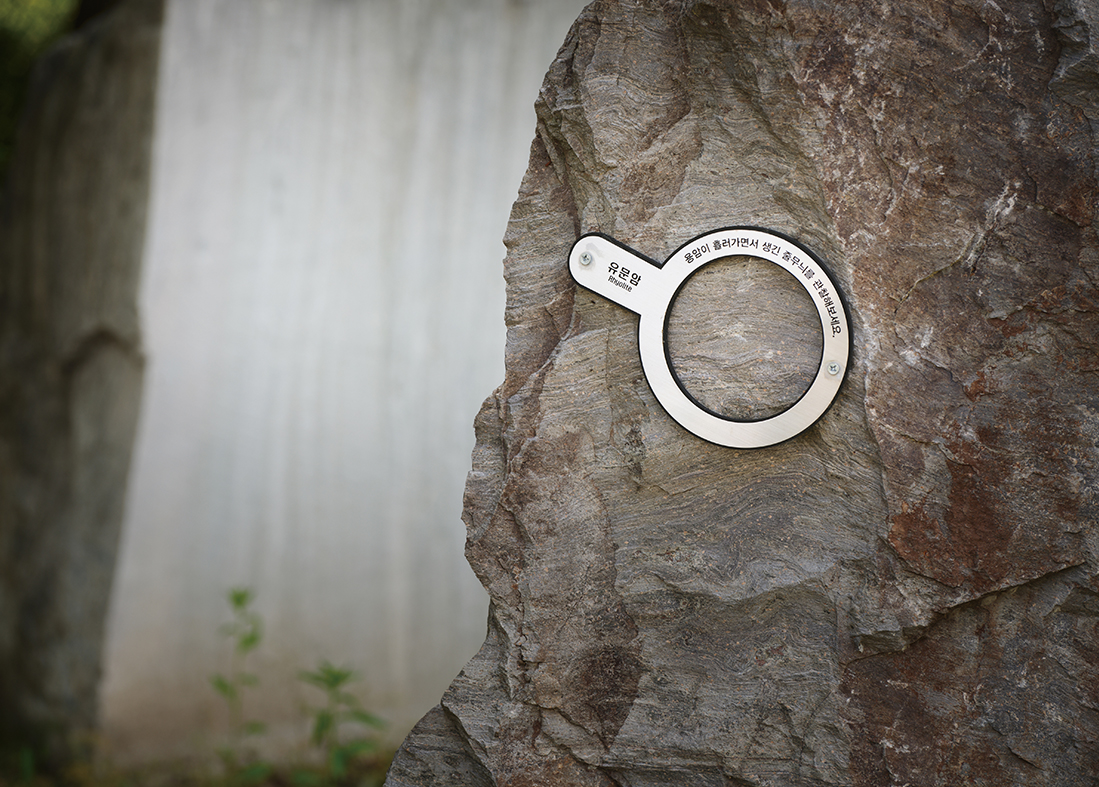
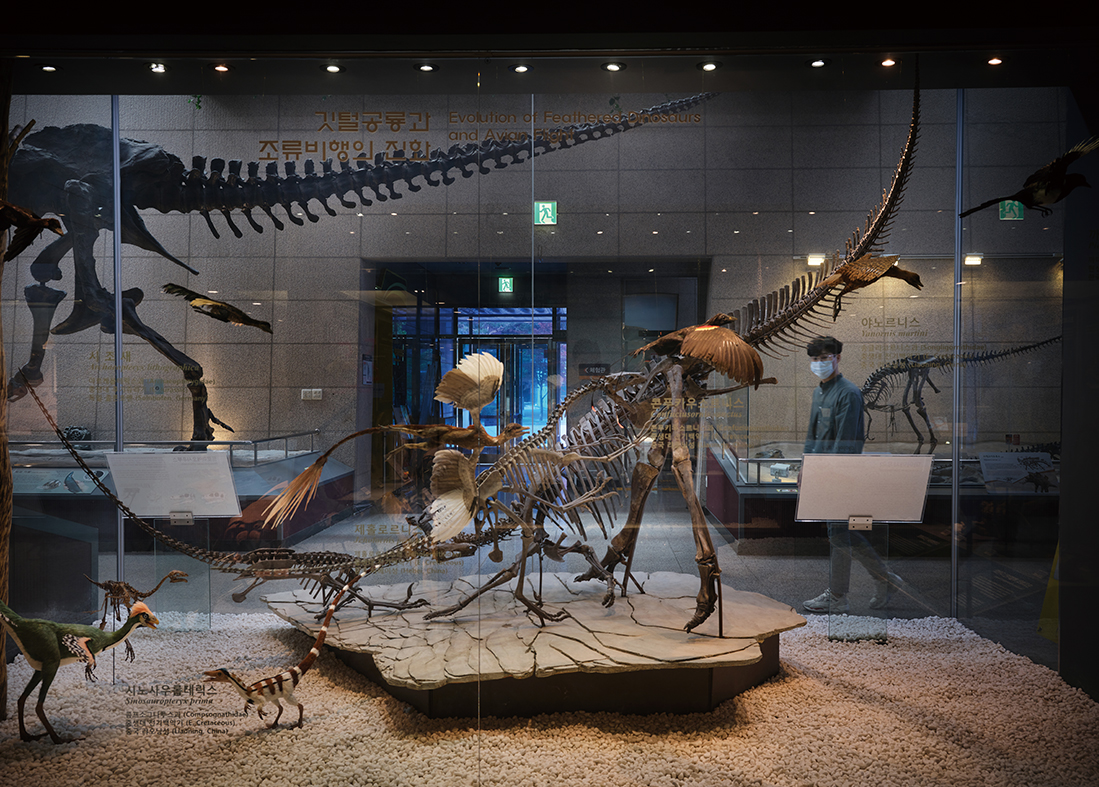
A pedestrian trail starting from KIGAM Geological Museum features rocks that can be touched. / A visitor examines dinosaur fossils at KIGAM Geological Museum.
Run by the Korea Institute of Geoscience and Mineral Resources (KIGAM), the KIGAM Geological Museum is another standout among the nation’s museums.
Greeting visitors at the main hall is a gigantic Tyrannosaurus-shaped figure and the world’s largest globe measuring 7 m in diameter. Superb replicas of dinosaurs such as Edmontonia and Triceratops never fail to impress children.
The 1st Exhibition Hall breaks down the history of Earth with clarity and simplicity. Discovered fossils and restored figures capture the evolution of life. The 2nd Exhibition Hall features rocks like sedimentary or metamorphic and methods of determining their age, as well as minerals such as silicate, halogen, phosphates and tungstates.
Outside of the building, visitors can touch 20 samples of mineral specimens like basalt fossilized from volcanic eruptions on Jeju Island and columnar joints from shrunken and cooled magma.
KIGAM is the next-door neighbor of one of the nation’s top sci-tech schools, the Korea Advanced Institute of Science and Technology, aka KAIST, with only a road separating them. The KAIST campus is a great place to relax thanks to greenery and red-brick buildings, and cherry trees also add a romantic whiff to the scenery.
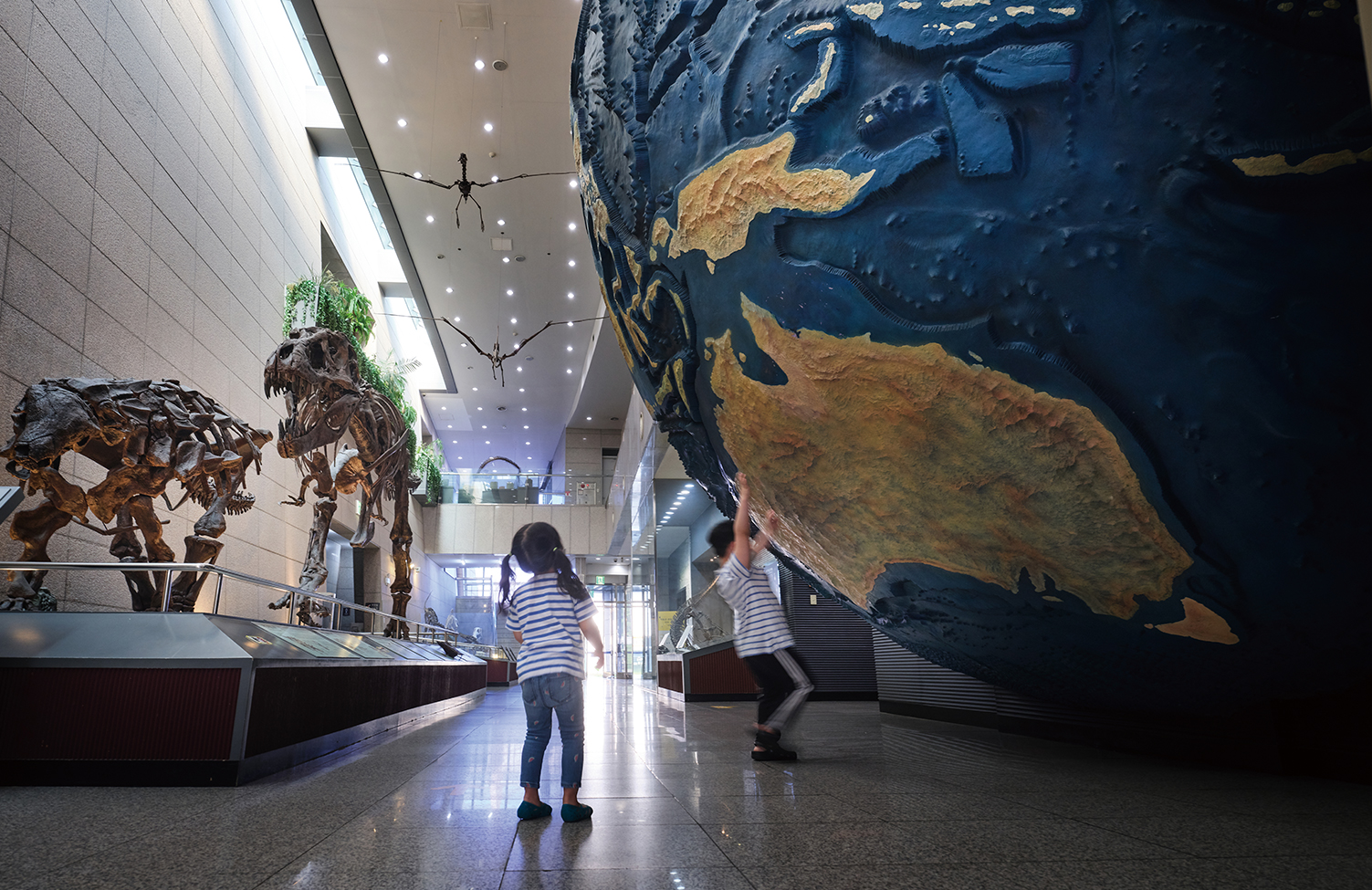
A massive globe greets visitors at the entrance of KIGAM Geological Museum.
Daejeon Observatory
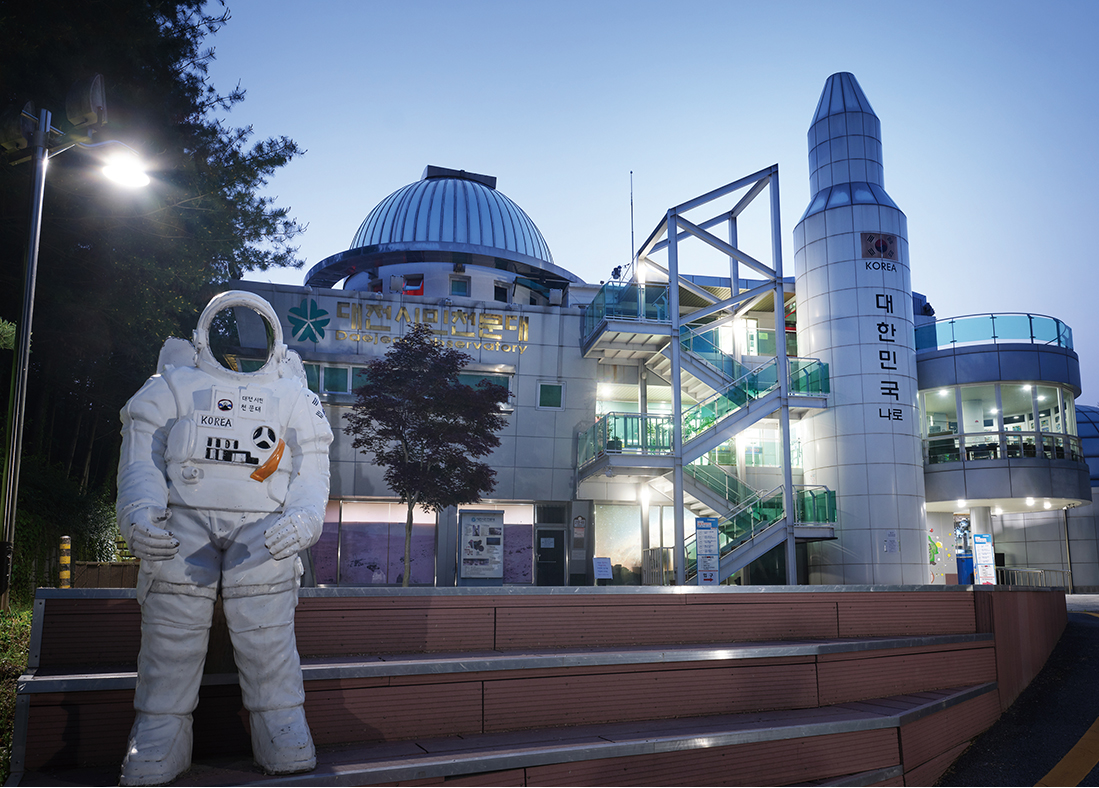
Daejeon Observatory, the first of its kind in the country to be opened for public use, is also the most visited public observatory.
A 200-m stroll along the riverside from KIGAM brings one to Daejeon Observatory, from where people can see the red flame at the sun’s center during the day and seasonal constellations by night.
The observatory is also open on a restricted basis at the moment because of COVID-19. Attendance is limited to 50 visitors per hour and up to 400 per day.
The main observation room has one telescope and the auxiliary observation room four. The main room has a domed ceiling 8 m in diameter and an ultra-low dispersion refractive telescope 254 mm in aperture. By day, a filter attached to the objective lens lets visitors view the sun’s red flame, while at night, the planet Venus, the suns of the Capella star system, and the constellations Cancer, Leo and Bootes can be spotted.
The operating hours of the rooms depend on the weather. They are closed during rain and snow, and even in periods of severe air pollution featuring fine and yellow dust.
The 100-m walk from the regular two-lane expressway and leading up to the observatory is a perfect trail for couples. Cherry blossoms are seen in spring, luscious greenery in summer, wistful leaves in autumn and snowy frost in winter.
ICT Experience Center at ETRI
Established in 1976, the Electronics and Telecommunications Research Institute (ETRI) is Korea’s top think tank for ICT R&D whose premier invention is code division multiple access, or CDMA, a core digital system of mobile communications for cell phones. With over 2,000 researchers devoted to R&D, ETRI is an ICT pioneer. Terrestrial DMB (digital multimedia broadcasting), WiBro (wireless broadband), the LTE (Long-Term Evolution) mobile communication system and optical wireless communication are among the institute’s preeminent achievements.
As an ICT trailblazer, ETRI offers ICT experiences on a reservation basis. Requests for group tours must be sent via email at least two days prior to the proposed date of visit and no more than two weeks in advance. By request, the institute will provide English interpretation onsite.
ICT Experience Hall provides a neat overview of ETRI’s major achievements, including its 16 flagship innovations in the 21st century. Some are as familiar as daily gadgets while others awaiting commercialization have an extremely futuristic look.
The Spatial AR Interactive System offers a hands-on experience with organisms inaccessible in daily life. TouchBim allows visitors to toy around and build with architectural materials, and GenieTalk offers automatic translation service. The interactive virtual aquarium is a favorite among students for its fishing experience, and wireless OLED lighting and the capsule endoscopy system are also popular.

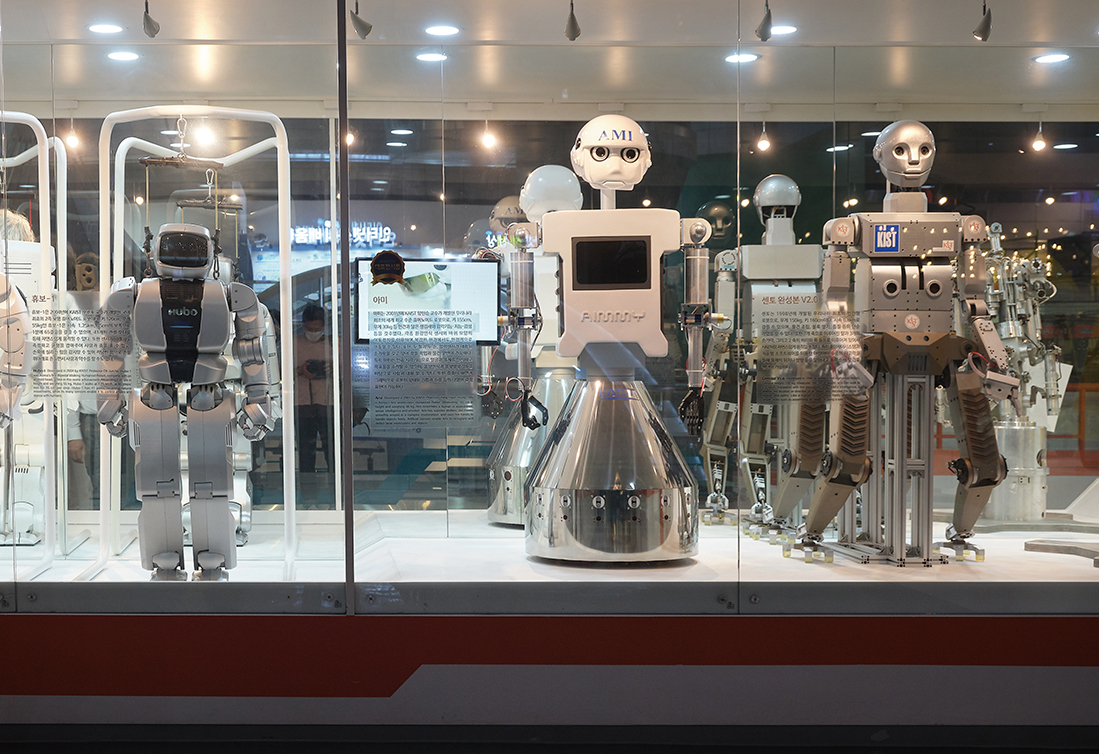
Children sit inside a futuristic vehicle at the National Science Museum. / Korean-made robots are on display at the National Science Museum.




















